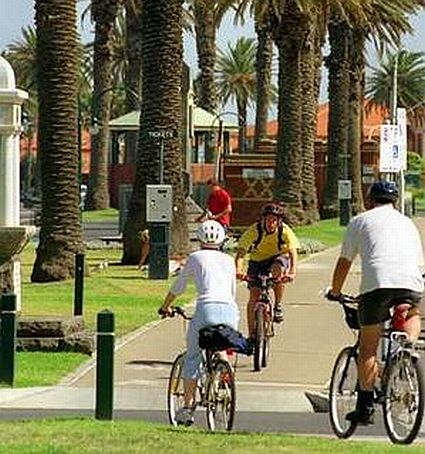
Black Gold is dead, renewable energy too might not cater to the burgeoning demands of the commuters, who are increasing on a whopping speed. We don’t have enough space to cater to those speeding hybrids either. So, what’s the solution? Surprisingly, if you’ll open your eyes, the answer, and of course the future, is lying right in front of your eyes. Yes, your very own bicycle!
Professor Nick Low, the Director of the Australian Centre for Governance and Management of Urban Transport, also sees the future of transport in bicycles. He wants the government to fund $100 million annually for cycling programs and infrastructure. For now, the state government is shelling out $70 million for cycling projects over ten years.
He also states that we are living in a world that is hampered by environmental disasters and obesity problems and cycling is the only alternative he sees that can efficiently tackle both these problems. He also stated that we need a quantum leap in bike planning for metropolitan Melbourne.
If the state government shells out that $100 million annually then according to Professor Low, by 2030 about 30% of all road trips will be made on bicycles. He also stated that till now the government agencies have not done anything that might have made people opt cycling in their normal routine. People usually use their pedal power for fun or as an exercise. He feels that every new housing development should be built with a footpath and every major road should have an associated bike path or else a decent shoulder where a bike can safely travel.
Till now, motorists feel that roads are exclusively built for cars and not for bikes, this has made cycling dangerous on major highways. The Australian government has no laws governing the safe distance between cars and cyclists. Such rules however, exist in many European countries and in several states in the U.S.
Professor Low has identified eight priority actions to help achieve the 2030 dream. These include making people realize that bikes can be more than just entertainment, include cycling as a part of overall transport planning, special design of bike path intersection including dedicated traffic lights and bike paths to be connected to rail stations and activity centers so that people don’t mind using a bike in their daily routine.
Some other projects should include building Copenhagen lanes where bikes can be separated from the speeding traffic by a lane of parked cars. Till now all the municipalities are doing is to paint lines on the road to indicate a narrow bike lane. This method is not only inadequate for the growing number of bikes but is also dangerous since a speeding out-of-control car cannot be stopped by a yellow line on the road.
Local administration should spend more money and should promote cycling by all means that are possible. For professor Low, Sweden is the vision where all age groups use bikes for daily business.
Cycling can be an excellent alternative in Melbourne where two-third of the trips cover less than five kilometers and using a bike for such journeys will not only save some money but also gives better health to you and the environment.
Via: The Age




